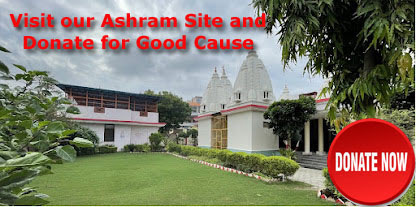Continuation…
Dr. Shanker Adawal
Evaluation of Strength
of Planets
5.1
Shadbala: This is the natural and most accurate assessment of
strength of planets for seven planets from Sun to Saturn. The nodes are not
considered. There are six kinds of strength for planets. The sum total of all
the six goes under the name of Shadbala.
The details of each of these are as under:
1.
Naisargika (Natural) Strength: This signifies the
inherent constitutional strength of a planet. The human body undergoes physical
changes from time to time but the individual qualities born with or the
inherent strength of a planet, which always remain constant. The strengths in
ascending order in Saturn, Mars, Mercury, Jupiter, Venus, Moon and the Sun (Sun
has the maximum strength).
2.
Chesta (Motional) Strength: This governs the native’s conduct in
life. Sun & Moon always have normal direct motion; the other five planets
have different types of movements- direct or retrograde, slow, fast or too
fast. Normal motion is not risky; too fast a motion may lead to disaster &
catastrophe; too slow a motion is also not desirable. Retrograde motion i.e.
when a planet is nearest to the earth, implies interrupted sequence and
stoppage of continuity just as a direct planet and its direct motion show
continuity & sequence. Retrogression weakens the power & strength of a
planet and makes it worse for evil, if it is a natural malefic like Mars or
Saturn; but a natural benefic like Jupiter or Venus is deprived of its power to
do good. This is an apparent backward movement which is unusual & abnormal
and hence is not likely to prove beneficial. While a planet is in Stabhaman i.e. remaining apparently
stationary or at a standstill, leads nowhere or might land one into difficulty,
danger or even disaster. In this state, a natural malefic is certainly stronger
for evil, rather than for good; while a natural benefic is supposed to be
stronger for good rather than for evil.
3.
Sthan (Positional) Strength: This has five sub-divisions governing
(a) high/ low birth or riches/ poverty, (b) environmental affinity (c)
achievements by the native, (d) assistance/ opposition, and (e) advantages of
birth. This corresponds to five types of strengths i.e. (a) Position of the
planet in the sign of exaltation, Mooltrikone, own, friend’s, neutral or enemy;
(b) Strength accruing out of position in Sapt-Vargas (Rasi, Hora, Drekkana,
Saptamsha, Navamsha, Dwadasamsha & Trimashma); (c) Ojha- Yugma-rasiamsha
strength (Strength accrued by placement in odd/ even Rasi & Navamsha); (d)
Kendradi Bala (Strength due to placement in Kendra, panphara or apoklim house);
and (e) Drekkana bala (Due to placement in 1st, 2nd or 3rd
Drekkana).
4.
Kala (Temporal) Strength: This consists of six fold strengths-
(a) Nathonnata (Diurnal & Nocturnal) strength; (b) Paksh (fort-night) strength; (c) Tribhaga (three parts of day-night
period) strength; (d) Varsha-Masa- Dina- and Hora (astrological year, month,
weekday & planetary hour) strength; (e) Ayana
(equinoctial) strength; and (f) Yudhha
(Planetary war) strength.
This is important for
determining the results of the planets during the course of their dasha period.
This shows the time when position & status can be achieved or the native
may have a fall during the dasha/ Antardasha of that particular planet. A
planet weak in Sthan bala does not
indicate much wealth, even though it is strong in Kala bala, because it has no inherent strength.
5.
Dik (directional) Strength: The planet are supposed to be strong
in the four directions, namely Mercury & Jupiter are strong in East i.e.
while occupying 1st house; The Moon & Venus are strong in North
i.e. while occupying 4th house; Saturn is strong in the West in 7th
house; while Sun & Mars are strong in South in the 10th house;
and is the weakest in the house opposite the house of their strength. Every
planet represents various persons in the family and the society, so their
strength helps the astrologer whether individual is likely to receive the
benefic or to suffer evil from the person or the direction concerned.
6.
Drik (Aspectual) Strength: Aspects from benefics are good. Such
natives as a rule are held in high esteem and are generally popular. If the
aspects are from malefic, the native is subject to criticism and abuse, perhaps
he may be the victim of a scandal also. Aspects of planets weak by sign or
house position mean little influence, while aspects of planets strongly placed
show marked influence. Aspects of friends are helpful while of enemies are
harmful. Evil aspects from malefic on the natural malefic and the enemies only
go to intensify the evil. Benefic aspects from benefics on the natural benefics
and friends go to intensify the good. Evil aspects from malefic upon the
natural friends though evil, indeed do not work havoc. Good aspects from
benefics on natural enemies do not produce much good. The houses which has the
following three divisions are also strong- (a) Strength of the house lord, (b)
Dik Bala, and (c) Drik bala.
5.2
Ashtak Varga
1.
It
means eight sources of energy. The fundamental principle is the assertion that
no planet or its placing in a house is eternally good or bad. Planets have
their own mutual relationships, which gets modified by mutual natal placement
with reference to Moon/lagna. The system takes into account lagna and all seven
planets excluding Rahu & Ketu. The system has an added advantage in that it
does away with the minor mistakes in birth time since it does not bother about
longitudes of lagna and planets. Each planet has some benefic places and throws
an influence on different signs or houses and each influence is called a dot or
bindu. Thus influences from seven
planets and lagna are obtained giving eight different Prastaar-chakra (one for each planet/ lagna). If we add benefic
dots in Prastaar-chakra, sign wise
(one point for each benefic dot), one gets the Bhinnastak-varga for each planet. If one adds the benefic points
sign-wise in Bhinnastak-varga of all
planets, one gets Sarvastak-varga.
2. In
Ashtak-varga, the primary importance is that of the sign/house occupied by the
planet. Its lordship is of secondary importance. A planet influences a house as
much as it has contributed to that house in own Bhinnastak-varga. The planet generates both static & dynamic
results. The static results are given by the Sarvastak-varga, whereas Bhinnastaki
Varga gives more minute details. The dynamic results are those which are
offered by dasha-lords and the planet in transit. Thus it gives general
strength of planets and sign/house. For close timing of any event, the
principle of “Kakshya” can be
applied. Hence Ashtak-varga can be effectively used in measuring strength of
yogas present in a horoscope and their timing of fructification.
3.
There are 337 points comprising of all 12 signs/ houses in Sarvastak-varga. Thus the average per sign comes to 28. If a house
has more than say 32 or more points, its significations will fructify well; but
if it has less than 25, it tends to give negative results. Similarly the
maximum points, a planet can have in a sign, are eight and the minimum is zero.
Therefore when a planet transits over a sign having following number of benefic
points in its own Bhinnastak-varga, the
results in general are:
8 points: All round
prosperity & happiness, alike a king.
7 points: Extremely good
fortune, great honour/awards.
6 points: Wealth, vehicles
and fame.
5 points: Birth of a
child, good clothes, good company.
4 points: Status quo,
mixed results.
3 points: Mental and
physical discomforts.
2 points: Loss of wealth,
troubles from authorities, fruitless wandering, and misunderstandings.
1 point: Disease, sorrow,
hardships, and misery.
0 point: Fatality,
humiliation, serious illness.
Continue…
Shanker Adawal
Profile: www.connectingmind.com
Research work and articles on Bhrigu Nadi astrology: www.shankerstudy.com
www.shankarsastro.com
Published articles on Articlesbase.com
http://www.articlesbase.com/authors/shanker-adawal/149926
or search keyword "shanker adawal" in google search for published articles
Join my Facebook Group for free Astro Queries: www.facebook.com/adawal
Published articles on Newspapers: http://tinyurl.com/2wyxtfk
Year 2012 for you: http://tinyurl.com/2012foryou
Research work and articles on Bhrigu Nadi astrology: www.shankerstudy.com
www.shankarsastro.com
Published articles on Articlesbase.com
http://www.articlesbase.com/authors/shanker-adawal/149926
or search keyword "shanker adawal" in google search for published articles
Join my Facebook Group for free Astro Queries: www.facebook.com/adawal
Published articles on Newspapers: http://tinyurl.com/2wyxtfk
Year 2012 for you: http://tinyurl.com/2012foryou

















































